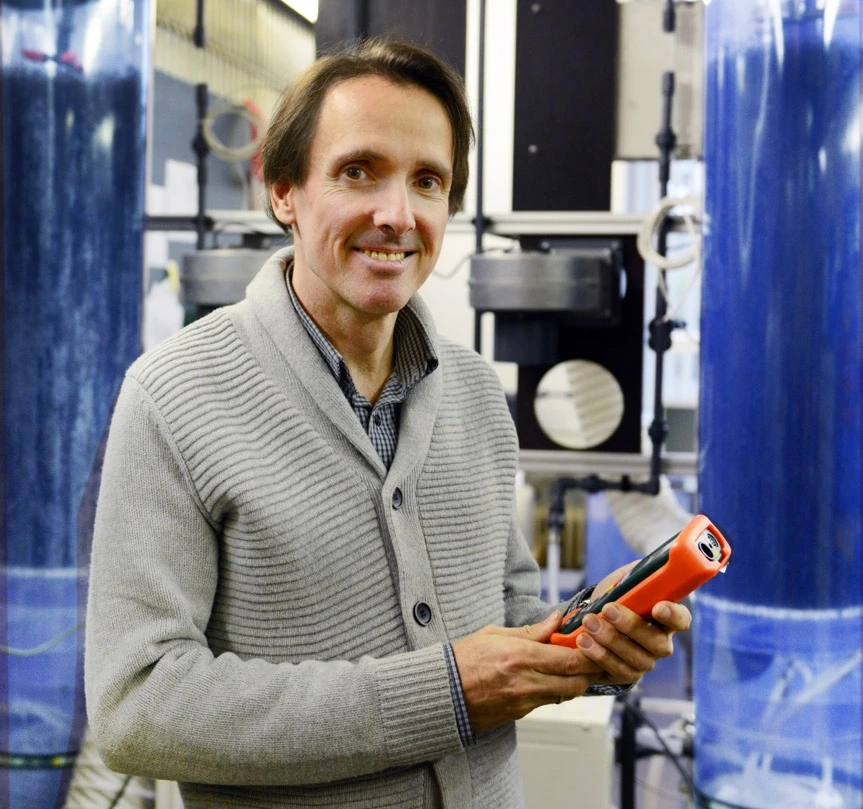How Adlershof can utilise energy more efficiently
The potential of brine systems
Adlershof as a green paradise. This is one possible future scenario – if you want to use energy particularly efficiently, for instance heating, drying, and air conditioning by means of hygroscopic salt solutions. These brine systems absorb moisture and release heat. On absorbing heat, water evaporates back out of the brine, and then cools. The water vapour needed could be generated by means of photosynthesis in roof gardens or on grass covered facades. This could help to raise energy efficiency in the Adlershof City of Science.
The question as to which renewable forms can contribute to primary energy savings in Adlershof constitutes the research subject of Stefan Kieseler at the Institute for Energy Technology of Berlin University of Technology. Specifically, he researches into the potential of nearsurface geothermal energy, photovoltaics, and small scale wind turbine generators. According to David Marten, wind energy specialist at the TU Institute of Fluid Dynamics, this last would not, however, make any appreciable contributions to energy efficiency. His conclusion: Adlershof is a “weak wind location”, as is mostly the case in built-up areas.
On the other hand, intensive use is made of photovoltaics. By the end of 2010, a peak module performance of 2052 kilowatts had already been installed in Adlershof. According to Stefan Kieseler, further expansions can be expected above all in new buildings. This new peak capacity could add up to about 4600 kilowatts. Wind and sun, however, generate energy only at certain times, and also excess process heat and cold are not available at all times. In such cases, there is recourse to near-surface aquifers, or groundwater bearing layers, as buffers. Ambient cold can be stored in the cold seasons and used for cooling in the hot seasons. In a reverse process, the heat emitted from cooling processes can also be stored in groundwater and used to support heating and drying processes at low ambient temperatures.
Also brines can store heat, and interlinked cooling systems can operate with particularly high energy efficiency. The plan, therefore, is to combine energy intensive facilities with very high cooling requirements. According to Martin Buchholz, Managing Director of Watergy GmbH, the storage medium brine with its higher energy density can be transported more easily than piped heat, and that free of losses.
This disincorporation by TU engineers develops brine apparatus for heating and air conditioning. The technology is first tried and tested in large scale laundry facilities in Adlershof. A positive balance could be converted into greenery on the roofs and facades of the rather dry buildings.
By Paul Janositz for Adlershof Special
